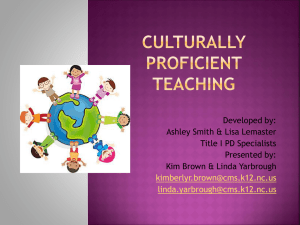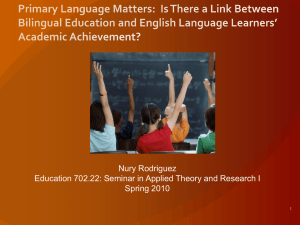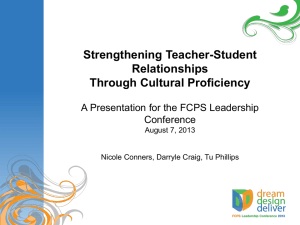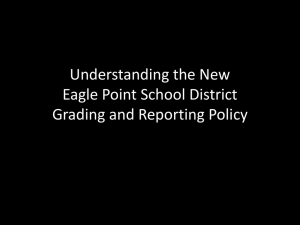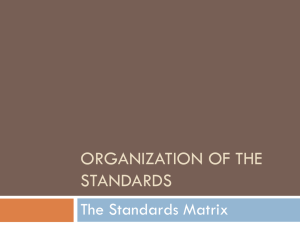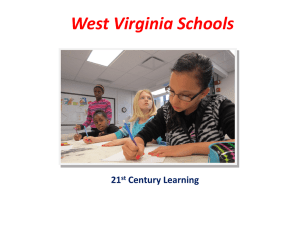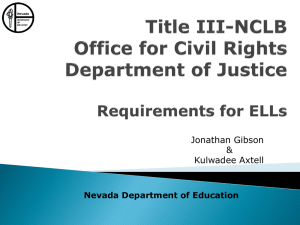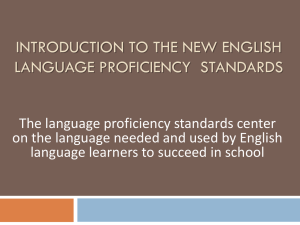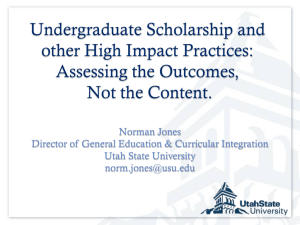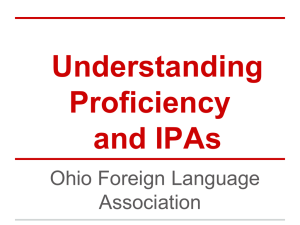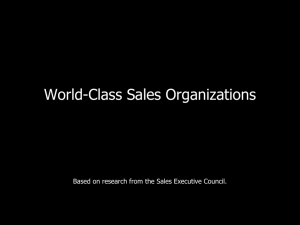1-OCDSB-Nov`09
advertisement
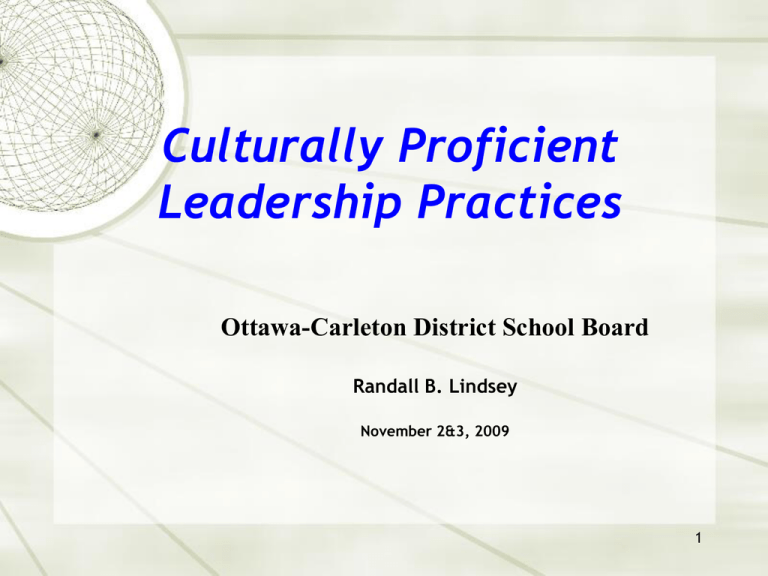
Culturally Proficient Leadership Practices Ottawa-Carleton District School Board Randall B. Lindsey November 2&3, 2009 1 Session Purposes: Cultural Proficiency as leaders’ personal work, Introduce and practice use of strategies and activities, and Guide use of ‘Manual for School Leaders.’ 2 Checking-in Activity Give one, Get one Complete the handout as requested On cue from me, find another person to share 1 finding Record that person’s learning into your handout On cue from me, you will have 2 more discussions Group discussion 3 In appreciation of the gifts from: Terry Cross 4 ‘We’ Raymond Terrell Kikanza Nuri Delores B. Lindsey Randall B. Lindsey Brenda CampbellJones Franklin CampbellJones Laraine Roberts Richard S. Martinez Stephanie Graham R. Chris Westphal, Jr. Cynthia Jew Linda Jungwirth Jarvis Pahl Keith Myatt Michelle Karns Diana Stephens 5 Cultural Proficiency It is an inside-out approach and the theme for our sessions It is about being aware of how we - as individuals and as organizations - work with others It is about being aware of how we respond to those different from us It is a worldview; it is the manner in which we lead our lives It cannot be mandated; it can be nurtured 6 Pre-conditions for doing this work School leaders have to do their own work first. Each leader has to think deeply about the guiding principles and essential elements. Cultural Proficiency is a journey with our colleagues, not done to them. We begin where people are, not necessarily where we would like them to be. 7 Culturally Proficiency is to: Reframe our work, not add to it. Be embedded into our processes: School Leadership teams PLCs or SLCs Department or grade level meetings Book studies Professional development sessions Faculty meetings Take a 3-5 year horizon 8 Margaret Wheatley A reading from: ‘Turning to One Another’ 9 Cultural Proficiency: A Manual for School Leaders Scan pages 4 to 7 Note descriptions of the tools of Cultural Proficiency 10 The Cultural Proficiency tools The Barriers Four caveats that assist in responding effectively to resistance to change The Guiding Principles Underlying values of the approach The Continuum Language for describing both healthy and nonproductive policies, practices and individual behaviors The Essential Elements Five behavioral standards for measuring, and 11 planning for, growth toward cultural proficiency Cultural Proficiency: A Manual for School Leaders Scan pages 98 to 108 Pay particular attention to the underlying core values in the Guiding Principles 12 The Barriers The presumption of entitlement Systems of oppression Unawareness of the need to adapt Resistance to change The barriers to cultural proficiency are systemic privilege, oppression, and resistance to change 13 The Guiding Principles Culture is a The Guiding Principles predominant force People are served in are the core values, varying degrees by the the foundation upon dominant culture which the approach is Acknowledge group built identities Diversity within cultures is important Respect unique cultural needs 14 Guiding Principles, con’t The best of both world enhances the capacity of all The family, as defined by the culture, is the primary system of support in the education of children School systems must recognize that marginalized groups have to be at least bicultural ‘Community-centric’ vs ‘School-centric’ Schools must recognize and adjust to effects of historical oppression - over representation in special education and under representation in gifted programs 15 Cultural Proficiency: A Manual for School Leaders Telling Your Story, page 169 Please organize into groups of 4 people from diverse backgrounds ethnicity, gender, job assignments, etc Choose one of the cells and relate a story to your colleagues We will debrief in the larger group 16 The Continuum Cultural destructiveness Cultural incapacity Cultural blindness Cultural pre-competence Cultural competence Cultural proficiency There are six points along the cultural proficiency continuum that indicate unique ways of perceiving and responding to differences. 17 Downward Spiral Conversation Incapacity Destructiveness Blindness Pre-Competence Proficiency Competence Upward Spiral Conversation 18 Words often used to describe some groups and implied terms for others: Inferior Culturally deprived Culturally disadvantaged Deficient Different Diverse Third world Minority Underclass Poor Unskilled workers Superior Privileged Advantaged Normal Similar Uniform First world Majority Upper class Middle class Leaders 19 Cultural Proficiency helps us to move FROM TOLERANCE FOR DIVERSITY Destructiveness - Blindness Focus on “them” and their inadequacies TO TRANSFORMATION FOR EQUITY Precompetence - Proficiency The focus on “us” and our practices Esteem, respect, adapt Tolerate, assimilate, acculturate Demographics viewed as challenge Demographics inform policy and practice Manage, leverage, facilitate conflict Prevent, mitigate, avoid cultural dissonance and conflict Stakeholders expect or help others to assimilate Information added to existing policies, procedures, practices. Stakeholders adapt to meet needs of others Information integrated into policies, procedures, practices. 20 Essential Elements for Cultural Competence: 1. Assess Culture 2. Value Diversity 3. Manage the Dynamics of Difference 4. Adapt to Diversity 5. Institutionalize Cultural Knowledge The Essential Elements of cultural proficiency provide the standards for individual behavior and organizational practices 21 Cultural Proficiency Conceptual Framework Manual, page 60 Read Table conversation Connections? Questions of clarification? General Discussion 22 Systemic Tension The Barriers are forces within people and organizations to resist change and foster a sense of privilege and entitlement that inform Destructiveness, Incapacity & Blindness The Guiding Principles are the core values, the foundation upon which the approach is built, that inform Precompetence, Competence & Proficiency 23 Paired Fluency 24 Cultural Proficiency: A Manual for School Leaders Cultural Competence Self Assessment Complete activity on pages 295-296 Individual, small group and large group considerations 25 The Achievement Gap Exists when specific groups of students do not achieve in school at the same level. Achievement gaps may correlate with race, ethnicity, family income level, language background, ability/disability status, and gender. 26 What we know, but act like we don’t Correlation is not causation: – Wide achievement gaps on state and national assessments and attainment gaps in high school and college completion exist. But poverty and race do not determine destiny in education. Opportunity gaps give rise to achievement gaps: – Low achievement and attainment rates persist because we continue to provide poor and students of color with less of everything research says makes a difference. 27 Revisiting Rubrics Study the Assessment & Accountability Rubric Locate your school/district for each of the 5 Essential Elements Locate where you believe your teacher colleagues would place your district Guiding Question:Within our current school processes, where and how do we move the conversation and decisions that will result in movement towards proficiency? 28 Revisiting Breakthrough Questions Read handout With 1 other partner, respond to items in Table 1.2 Discussion: Questions, observations, insights? Return to partner discussion, complete Table 1.3 Discussion: How do these activities inform intentional movement along the Continuum? 29 States of Mind/Essential Elements Each table will work with 1 of the essential elements and respond to the prompts Chart and post responses - 20 minutes Carousel sharing Discussion 30 Consideration of Data What achievement data do you want to examine? How is your school/district doing with regard to special needs students? How is your district/school doing with regard to language-learning students? What access data do you want to collect and analyze - e.g., special needs identification, attendance, suspensions, expulsions? 31 Culturally Proficient leaders ask: In what ways do we adapt to students who have a different culture, different set of values, different behavior patterns, different languages, and different learning styles? Maybe the deeper question is: Different from what or whom? 32 Voices that Resonate 33 Other Cultures The world in which you were born is just one model of reality. Other cultures are not failed attempts at being you: They are unique manifestations of the human spirit Wade Davis, Anthropologist 34
